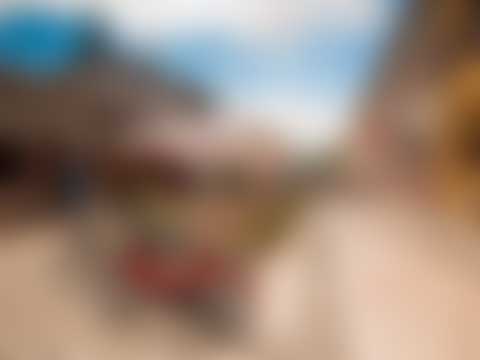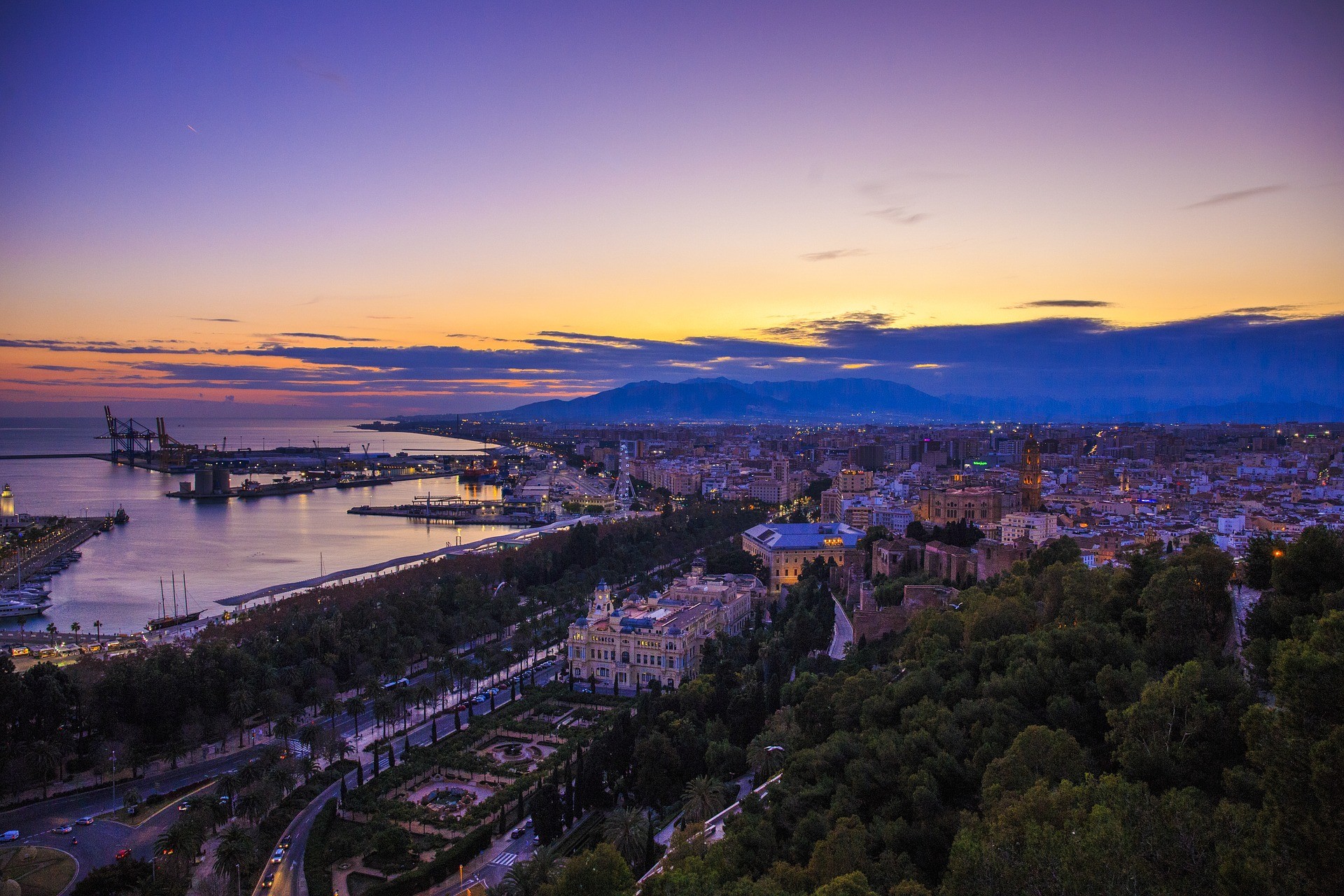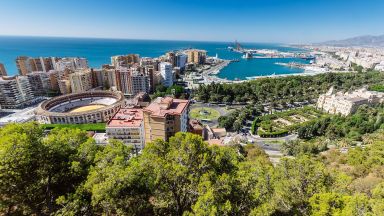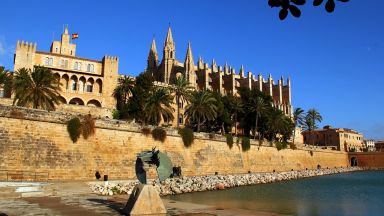Exploring Picasso’s Málaga
This website uses affiliate links which earn a small commission at no additional cost to you.
Malaga is the birthplace of one of the world’s greatest artists, the much-celebrated and internationally revered Pablo Picasso. Although best known as a painter, Picasso was also a sculptor, print maker, theatre designer and ceramic maker. Picasso was trained by his father, a fine art professor, from an early age.
Whether you are a long-time Picasso fan, an art lover in general or just interested in learning more about the artist and the city, the Picassoan Route will guide you to the key points of the city related with Picasso.
Picasso Foundation and Birthplace Museum

Where better to start than the North West corner of Plaza de la Merced, at the house that Picasso was born.
At number 15 of the plaza is the house in which Pablo Picasso was born in 1881, a couple of years later, his family would move to number 17. The house now operates as a museum, and the building is the headquarters of the Pablo Ruiz Picasso Foundation, dedicated to the dissemination of his life and works.
The museum houses an art collection with pieces by Picasso and other contemporary artists. There is also a specialized library and an on-going program of temporary exhibitions and cultural activities held here.
Location: Museo Casa Natal de Picasso Plaza de la Merced, 15 29012 Málaga Spain | Hours: 9:30 a.m. to 8:00 p.m | Price: Museo Casa Natal (Plaza de la Merced, 15): € 3 Temporary exhibition (Exhibition hall in Plaza de la Merced, 13): € 3 Combined ticket: Museum Casa Natal and temporary exhibition: € 4.FREE ENTRANCE: Sundays from 4:00 p.m. | Website
Read more about Museo Casa Natal
Sit next to Picasso at the Plaza de la Merced

After leaving Picasso Foundation and Birthplace Museum head into the Plaza de la Merced.
Plaza d la Merced is a large public square in Málaga’s city center with a number of pavement cafes on its north side. Find the bronze statue of Picasso sat on a marble bench taking notes with a pencil.
Look out for the doves in the square, Picasso could see from his window and was then to depict so many times in his artwork
The statue is relatively new to the square, being installed in 2008. It was built by Francisco López Hernández and measures 1.4 meters in height.
Grab a few selfies sat next to him before moving on.
| Hours: 24 Hours
Read more about Plaza de la Merced
The Church that Baptized Picasso

Head across the Plaza to Calle Granada. On the corner you will see Farmacia Bustamante one of the oldest pharmacies in the city. When the establishment was run by Antonio Mamely, the back room became a meeting place where the pharmacist’s friends, including the father of Picasso, José Ruiz would regularly get together to chat.
Head down Calle Granada until you see the Iglesia de Santiago on your left.
The Iglesia de Santiago or St. James Church is the oldest church in Malaga, dating back to 1490. It is a splendid example of the Gothic-Mudejar style of the 15th and 16th centuries.
The church combines Moorish and Gothic styles; the beautiful tower is Mudejar style.
Picasso’s grandparents and parents got married in the Church and Picasso and his two sisters were baptised here. Picasso was baptized under the full name of “Pablo Diego José Francisco de Paula Juan Nepomuceno María de los Remedios y Crispiniano de la Santísima Trinidad”. He was baptized in the 16th century baptismal font and his baptismal certificate is stored here.
On the same street, Calle Granada, at 5, there used to be a jeweller’s that belonged to Picasso’s uncle Baldomero Ghiara. He supported Picasso financially while he was studying at the San Fernando Royal Academy of Fine Arts in Madrid. Even today in the shop that is currently housed in this establishment, you can still admire the beautiful allegories painted on the ceiling that date back to the 19th century.
Location: Parroquia Santiago Apóstol Málaga Calle Granada, 78 29015 Málaga Spain | Hours: 9.00 – 13.30 and 18.00 – 20.00 | Website
Read more about Iglesia de Santiago
Museo Picasso Malaga

Leave the Church and carry on down Calle Granada. Take the third turning on your left into Calle San Agustín. At the beginning of this street appears to be the nursery school attended by Picasso. You will come to the Museo Picasso Malaga on your left.
This museum, was created in response to the artist’s desire for his work to be displayed in his home town, and is a fitting tribute that magnificently conveys the depth and variety of his genius. The collection’s 233 works much of which were donated by Christine, the artist’s daughter-in-law and Bernard Ruiz-Picasso, his grandson are augmented cover the vast span of his career.
The collection spans from his earliest academic studies, his personal take on the classics, his Cubist experiments, his explorations of ceramics, his re-workings of the Old Masters and his late paintings of the 1970s.
It is housed in the painstakingly restored and carefully adjusted Renaissance gem, Palacio de Buenavista. If you climb the staircase to the very top of the museum, you can look back and see the tower of the church of Santiago, where Picasso was baptized.
The Calle San Agustín, the street where the Picasso Museum is located, was also the street where the young Picasso went to nursery school.
Location: Picasso Museum Málaga Palacio de Buenavista Calle San Agustín, 8 29015 Málaga Spain | Hours: 10am-8pm Jul & Aug, to 7pm Mar-Jun, Sep & Oct, to 6pm Nov-Feb | Price: €9, incl temporary exhibition €12, free last 2hr before closing Sun | Website
Read more about Picasso Museum Málaga
Old Convent and school of San Agustín

Next to the church of San Agustín, we discover the old convent and school of San Agustín. This building housed the offices of Malaga Town Hall from 1869 onwards which included the municipal archive and museum of Malaga.
Picasso’s father, Don Jose Ruiz, was a curator of the museum which was located in this building which at the time was also the Old Malaga City Hall. In compensation for salary delays, they let him have his painting workshop there. Pablo remembered perfectly the visits to his father’s workshop. Picasso’s father had made pigeons a particularly favored subject of his paintings and taught Picasso how to draw them.
Read more about Church of San Agustin
San Telmo School of Arts

By the Plaza de la Constitucion we find the Malaga Athenaeum, which during Picasso’s childhood period was the San Telmo School of Fine Arts. José Ruiz was a student at this School and later worked there as an assistant teacher of Line drawing. Although Picasso was too young to attend, it is likely that on occasions he would have accompanied his father. Today the Athenaeum conserves a permanent record of this association.
| Website
Read more about Athenaeum of Malaga
San Rafael School

In the nearby Calle Comedias was San Rafael School, at nº 20, nowadays nº 18 where Picasso studied as a child. The artist’s recollection of this building with its central courtyard surrounded by columns, was of an establishment “assembled in a modern style, filled with light and well ventilated”, although what he best remembered was his boredom and the fear that his father would not come to collect him: “I was sure that if he left me the walking stick and the dove then he would return for me. What he preferred more than the stick was the dove or the paintbrushes because he knew he could not do without any of them”.
There is no school there now, but is a nice to walk through one of the narrow streets of Málaga and come out at the Church of the Martyrs which young Picasso undoubtedly ran every day.
Royal Music Conservatory Maria Cristina

Not very far away, in the Plaza de San Francisco, stands the Royal Music Conservatory Maria Cristina. In the 19th Century this building housed the Lyceum of Science, Literature and Art and was the main venue of numerous activities, attracting to its salon representatives of Malaga intellectual life. It is certain that Picasso would have accompanied his father on one or other occasion and we can give credence to the story that the painter Martinez de la Vega “christened him” as a painter in 1897, after he had obtained the prize in the General Exhibition of Fine Arts for his work “Science and Charity”.
The Malagueta Bull Ring

And now, turning our attention slightly away from the central urban locations described above, we should include a reference, finally, to the Malagueta bullring, opened in 1876. Picasso went many times with his father to watch the bull fights in which he saw the most illustrious bullfighters of that period, and this would develop in him an enthusiasm that was to accompany him all his life and have a profound influence on his artistic iconography. He also recalled, according to his secretary Jaime Sabartés, having been at the bull ring watching Moreno Carbonero working on his painting “The Arrival of Roger de Flor in Constantinople” (1888), surrounded by horses and friends dressed up to serve as models for him.
Location: Paseo de Reding, 8 29016 Málaga | Hours: The bullring is open between April and September, from 10:00 - 13:00 and 18:00 - 20:00, and during the August Feria from 10:00 - 20:00. Closed at weekends. | Price: Admission: free. Entrance fee museum: € 1.80
Read more about Malagueta Bullring
This website uses affiliate links which earn a small commission at no additional cost to you.



